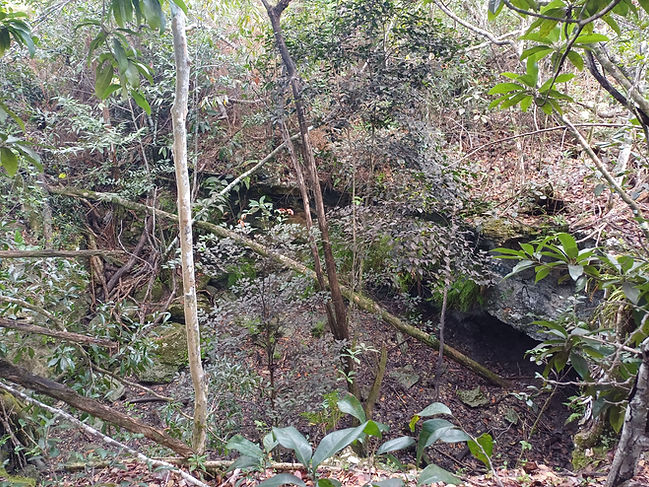

GEOLOGY

According to geologists, The Bahamas began to form after the formation of the Atlantic Ocean, around 200- 150 million years ago. Borehole samples done across the archipelago revealed volcanic debris, limestone, and marine shales dating back to the early Jurassic era.
The Bahamas also known as The Lucayan archipelago is unique in that it is made entirely of limestone.

Limestone is a type of carbonated sedimentary rock. It is a common type of carbonate rock, with some of the largest deposits being found in the US, China, Russia, Japan, India, Brazil, Germany, Mexico, and Italy. Our islands rest on a limestone carbonate platform about 13km thick.
Limestone usually forms in calm, clear, warm, and shallow marine water. Animals, like corals, algae and mollusks can extract calcium carbonate from the water to make their shells and beautiful structures.
When these organisms die, their shells and other body components fall to the bottom of the sea. Over time, they lithify into limestone rock. Limestone can also be formed by chemical processes such as the precipitation of calcium carbonate from oceans or lake water.

The waters of The Bahama archipelago are rich in calcium carbonate. When the ocean water heats up, calcium carbonate precipitates out and forms concentric rings around bits of coral or other debris. These circular objects, called ooids or egg stones sink to the bottom and help to form sand. A good example of where you can find this type of sand is in the Joulter Cays in North Andros. Calcite and aragonite, two forms of calcium carbonate make up the majority of surface limestone in The Bahamas while dolomite, anhydrite, gypsum and calcite make up the majority of sediment at depths of 30m to 150m.
Limestone is a relatively soft and porous type of rock and these characteristics makes it highly susceptible to the process of weathering and erosion from different sources such as rain, wind and wave action. As a result, limestone rock has created some of the most beautiful and intricate geological formations in the world.
The dynamic shifts in sea levels over the past 500,000 years have significantly molded the landscape of The Bahamas. This transformation is evident in the creation of geological features such as caves, sinkholes, banana holes, and blue holes. Caves and banana holes, specifically, emerged during geological epochs characterized by higher sea levels than today.

Cays in the Lucayan archipelago
Rocky outcrop depicting fosilised wave action
Ooids
Banana hole





